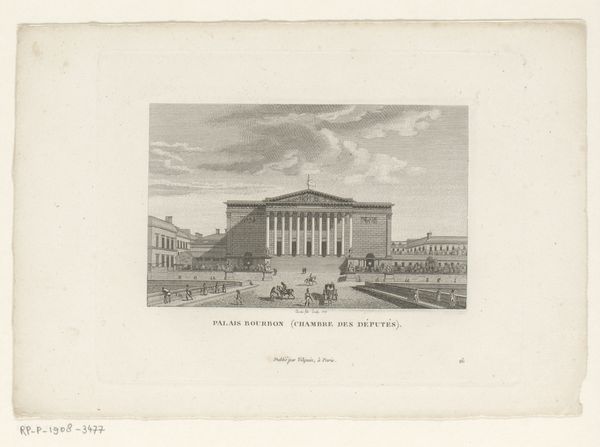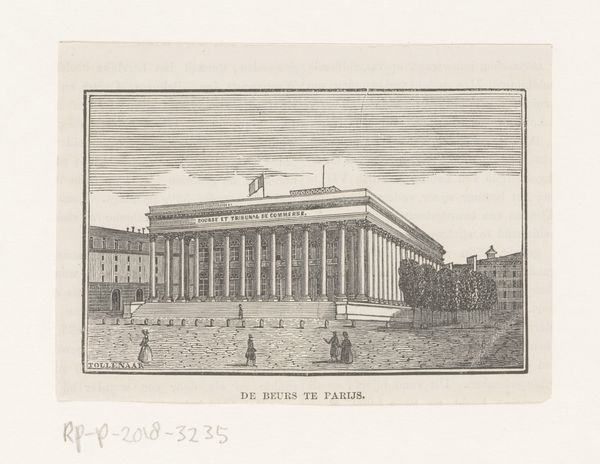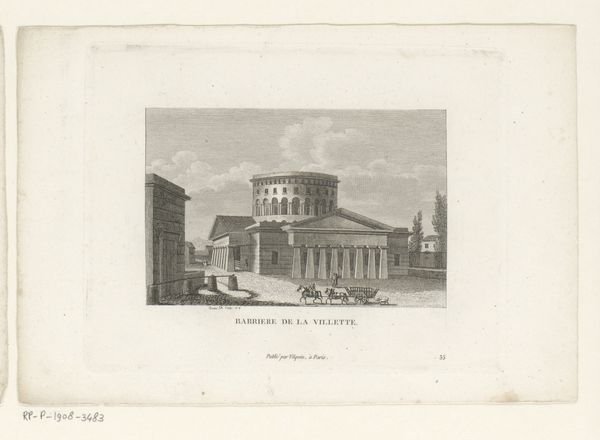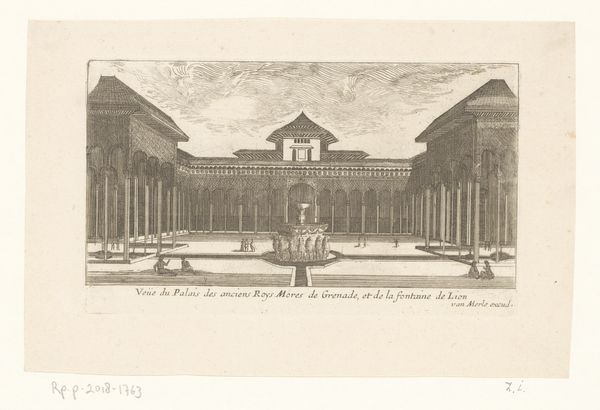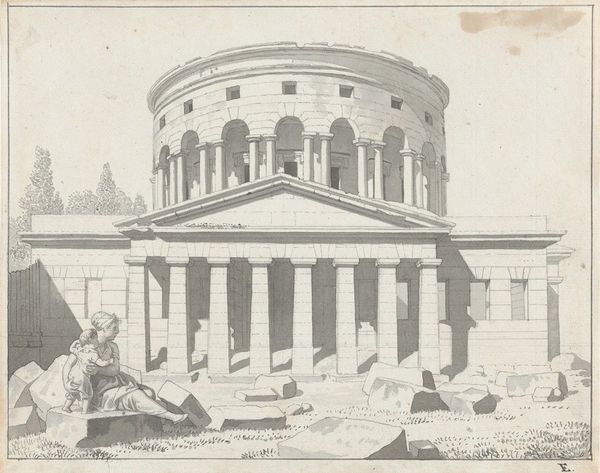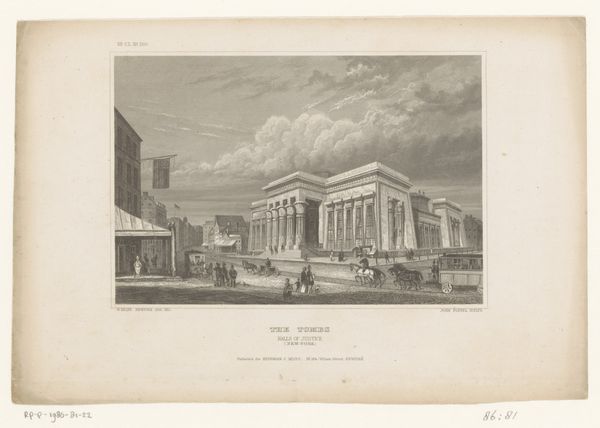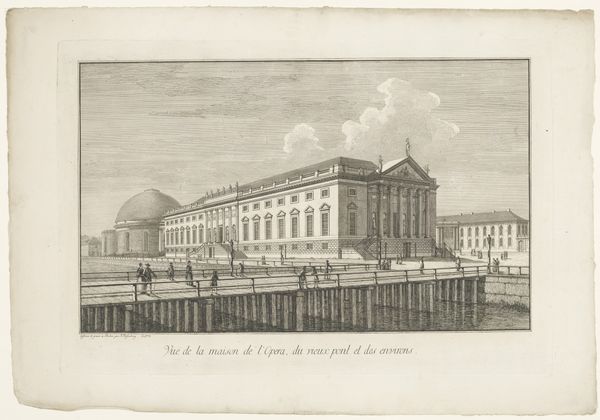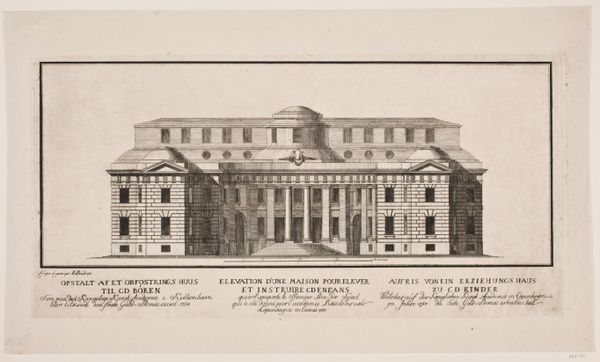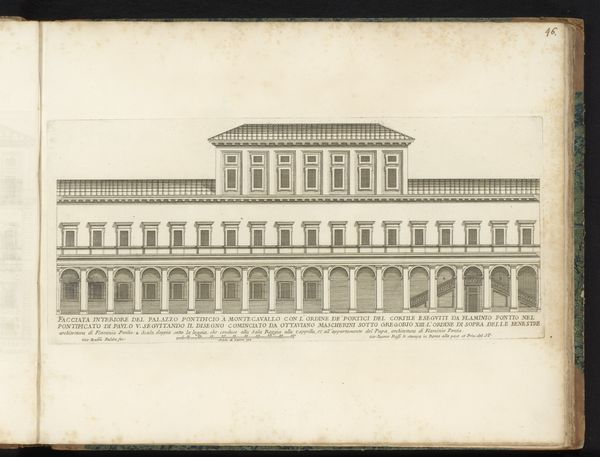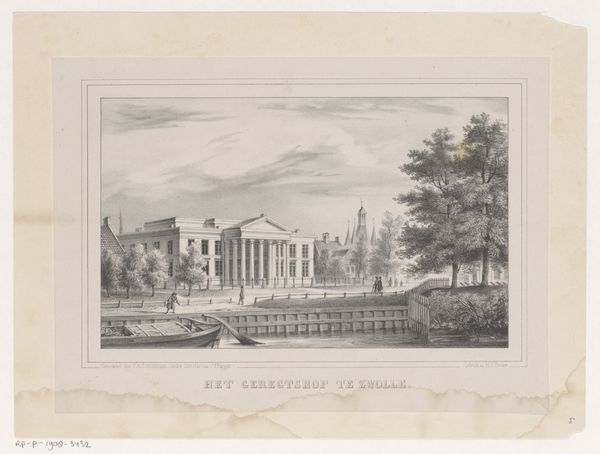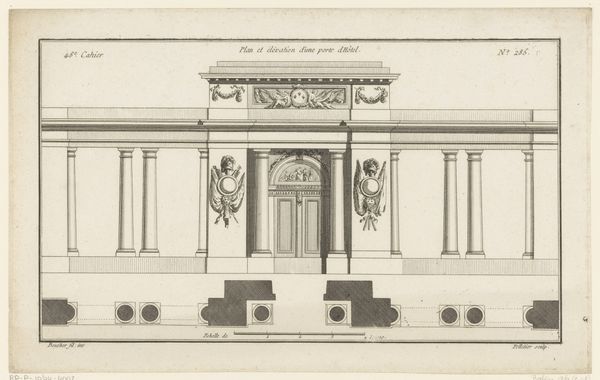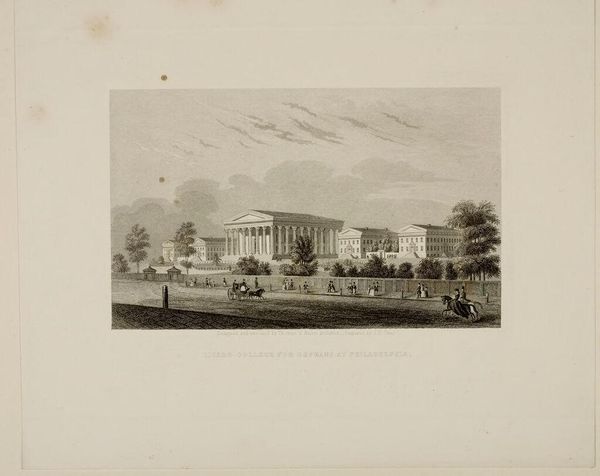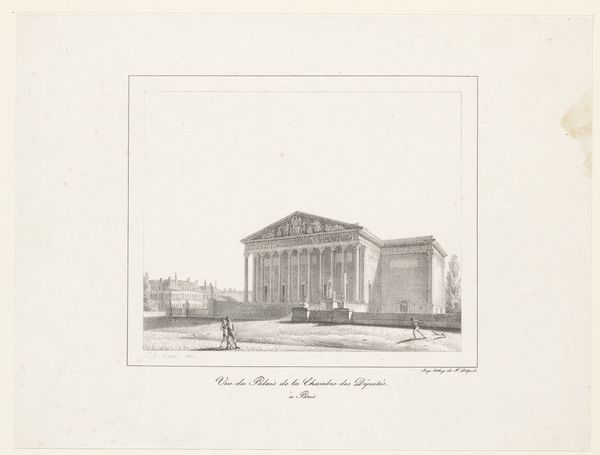
Villa Paviljoen Welgelegen van bankier Henri Hope in Haarlemmerhout bij Haarlem 1789
0:00
0:00
print, engraving, architecture
#
neoclacissism
# print
#
landscape
#
cityscape
#
engraving
#
architecture
Dimensions: height 223 mm, width 356 mm
Copyright: Rijks Museum: Open Domain
Curator: This engraving by Jan Lucas van der Beek, created in 1789, presents the Villa Paviljoen Welgelegen of banker Henri Hope in Haarlemmerhout, near Haarlem. Editor: What strikes me immediately is the incredible balance and symmetry, an almost relentless pursuit of classical harmony in architectural form. The use of line and shading emphasizes this. Curator: Absolutely, you're observing the principles of Neoclassicism taking root. Henri Hope, commissioning this villa, sought to align himself with ideals of reason and order through architectural display, which at this moment reinforced the legitimacy of his status. Editor: The formality is remarkable— the repetitive columns, the triangular pediment, and the statues atop the wings. It's not just a residence; it's a statement, one made through careful repetition and division. Curator: It certainly is. The placement of the villa in the Haarlemmerhout wasn't accidental. Public access and the vista it presented allowed Hope to assert his presence in the public sphere. His villa became part of the civic identity. Editor: There's a tension created by that very controlled setting, a constructed paradise of perfect lines that hides the natural landscape beyond the fence. Is that symbolic to the relationship between money and ownership versus nature, I wonder? Curator: It certainly could be seen that way. These landscape scenes acted almost as prospectuses: architectural ideas for the burgeoing capitalist class. The imagery signified to others to aspire to it. Editor: Indeed. Considering how light plays here and given how meticulously the engraving translates three dimensions onto a flat plane… it is like walking along the street. Van der Beek had the sharpest of eyes and clearly was committed to translating depth through carefully orchestrated lines. Curator: And translating an ideology. Art wasn’t simply representative, it participated in building an ideal of society. Editor: So, in conclusion, this piece presents more than a picture of a fine house; it provides insight to the mindset of an epoch as well as insight into one man’s goal to embody order through architectural design and placement in Dutch society.
Comments
No comments
Be the first to comment and join the conversation on the ultimate creative platform.

